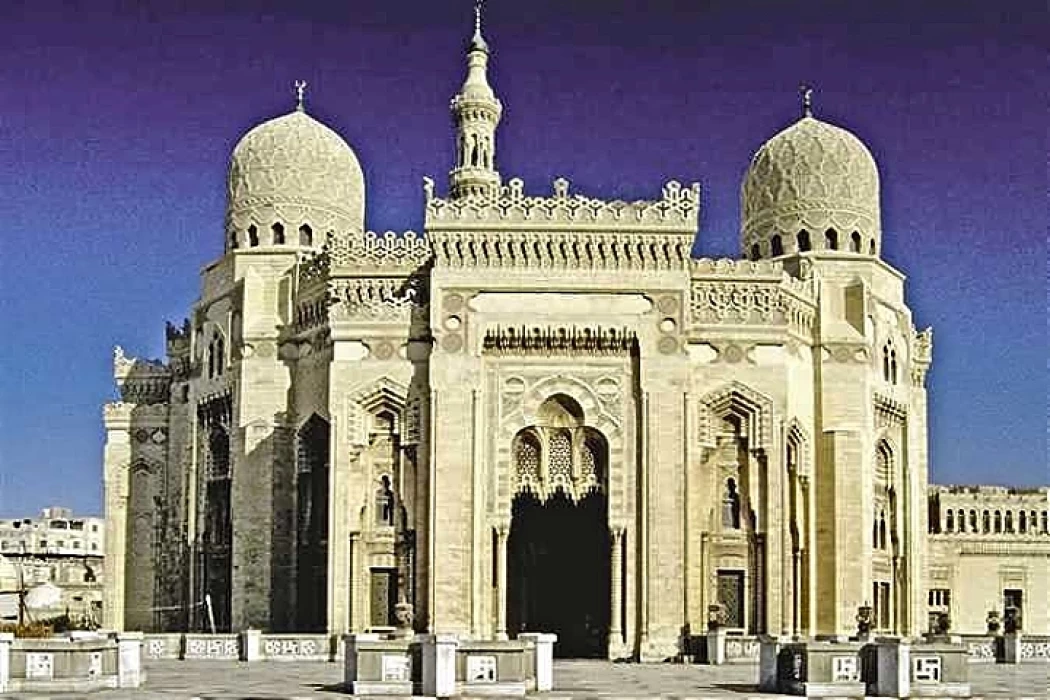
Mosque of abu al-abbas al-mursi
Information about the mosque
This mosque houses the mausoleum of Sheikh Shihab al-Din Abu al-Abbas Ahmad Bin Hassan bin Ali Al-Khazraji Al-Ansari Al-Mursi, whose lineage is related to the journalist Saad Ibn Ubada.
Abu'l-Abbas grew up in a religious environment that prepared him for Sufism. He studied and took the covenant at the hands of his Sheikh Abu Hassan al-Shazli. Abu'l-Abbas resided in Alexandria for forty-three years until he died on the twenty-fifth of Dhu al-Qa'da in 686 ah and was buried in Alexandria in the Bab al-Bahr cemetery. Until the year 706 ah when Sheikh Zain al-Din ibn al-Qattan, the Chief Merchant of Alexandria, built a mosque on it.
The most important feature of the mosque is the decoration in the Arabic and Andalusian style, and the Western dome is topped by the mausoleum of Abu al-Abbas and his two sons.
History of mosque renovations
In the year 882 AH, corresponding to 1477 ad, the mosque was neglected, so Prince qajmash Al-asahaki Al-Zahiri rebuilt it during his mandate over Alexandria in the era of the honorable King Qaitbay and built himself a tomb next to Abu al-Abbas and was buried in it in 892 Ah.
In 1005 AH, corresponding to 1596 AD, it was rebuilt by Sheikh Abu al-Abbas al-nasafi Al-Khazraji. In 1179 AH, corresponding to 1775 AD, the delegation of Sheikh Abu al-Hassan Ali bin Ali al-Maghribi to Alexandria and visited the mausoleum of Abu al-Abbas al-Mursi, and saw its narrowness, so he renovated it, as well as renovated the compartment and dome and expanded the mosque.
In 1280 AH, corresponding to 1863 AD, when the mosque was destroyed and its condition became bad, Ahmed Bey dakhakhni, the sheik of the builder's sect in Alexandria, restored and renovated it and stopped it, and the caretaker of the Waqf later took over its expansion little by little.
The mosque remained so until King Fuad I ordered the creation of a spacious square called the square of mosques, which should include a large mosque for Abu al-Abbas al-Mursi and a mosque for Imam Al-busier and Sheikh Yaqut Al-throne.














